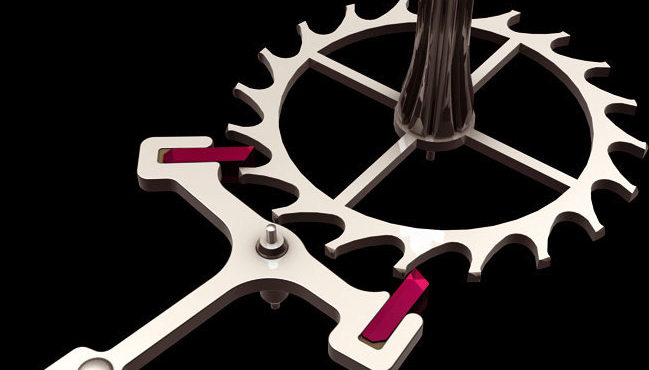When energy is stored in the mainspring, by winding, the train wheels begin to turn. This energy is carried from the barrel through the center, third and fourth wheels to the escape wheel.
Considering the escapement as a unit, it can be seen that the escape wheel supplies the power, whereas the pallet transfers the rotary motion of the escape wheel into a back and forth motion of the pallet. The pallet in turn imparts motion to the roller jewel which causes a vibrating motion of the balance wheel.
The pallet, roller jewel and escape wheel are the “heart” of every mechanical watch. All pars must be adjusted perfectly in order for the watch to function properly and keep accurate time. Tolerances are tight and “close does not count”.
Parts of the watch train and escapement
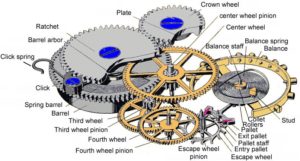
Parts and names associated with a watch escapement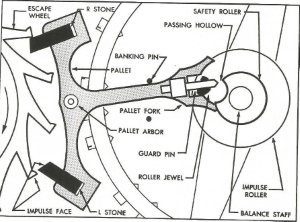
As the balance wheel swings, the jewel pin is carried back and forth across the center line of the escape wheel, pallet and balance wheel.
This impulse action supplies the energy to maintain the balance wheel in motion. After the escape wheel tooth slides off the pallet stone, it travels a short distance know as drop, until another tooth locks on the opposite pallet tone
Escapement in motion
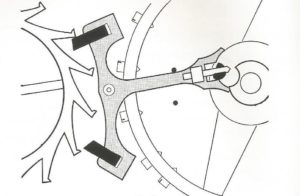
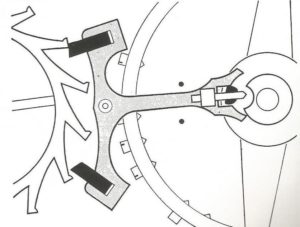
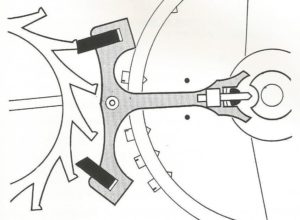
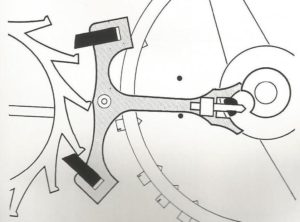
Up close pictures of a watch pallet and escape wheel
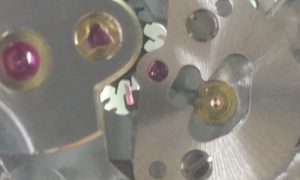
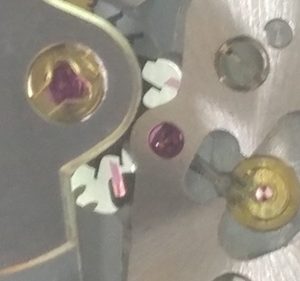
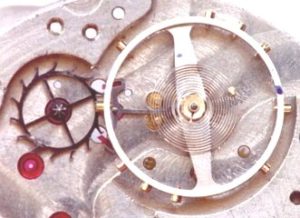
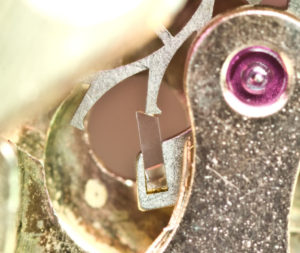
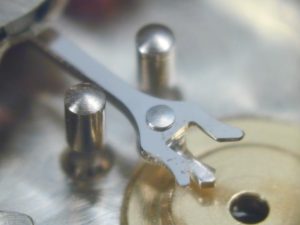
How a perfectly adjusted pallet and balance work and sound:

